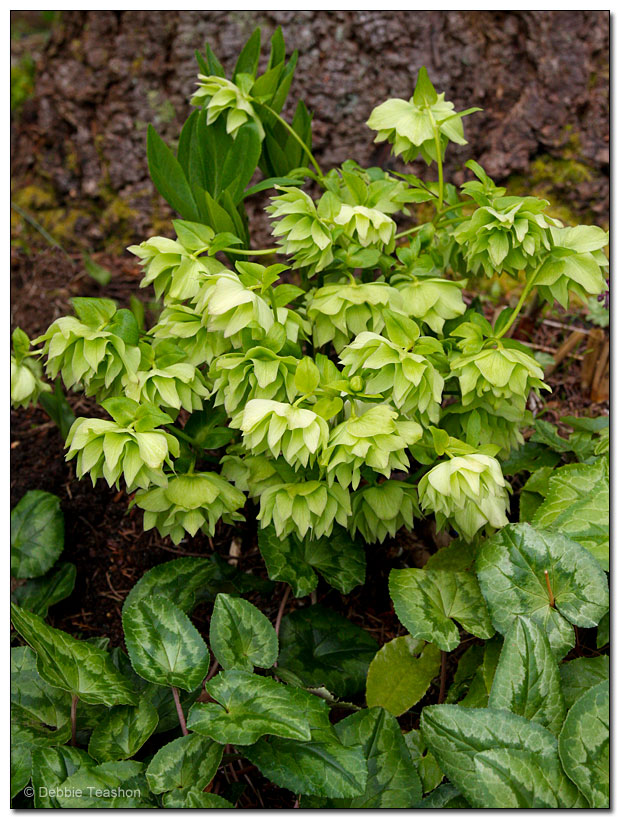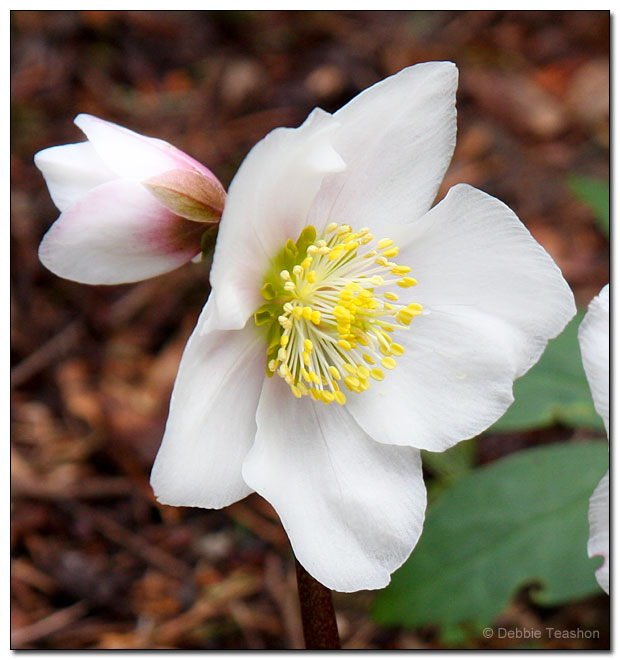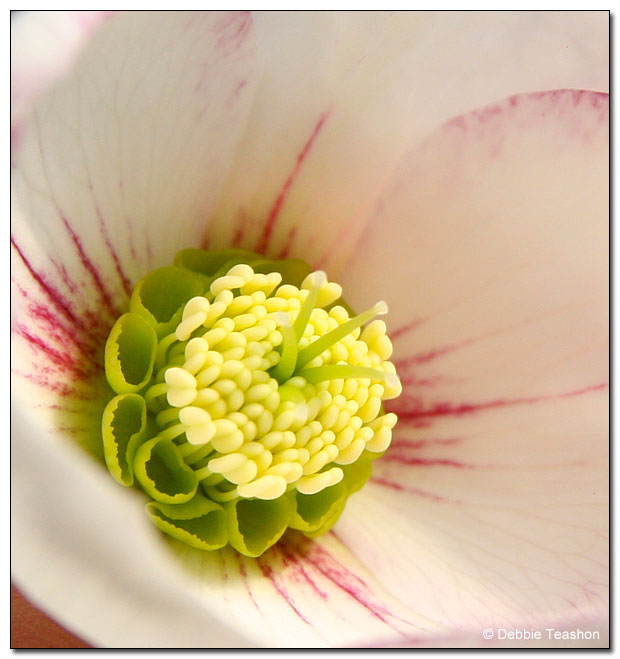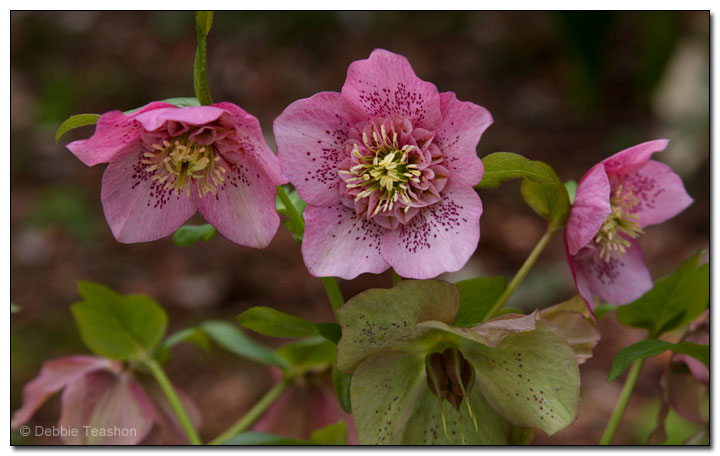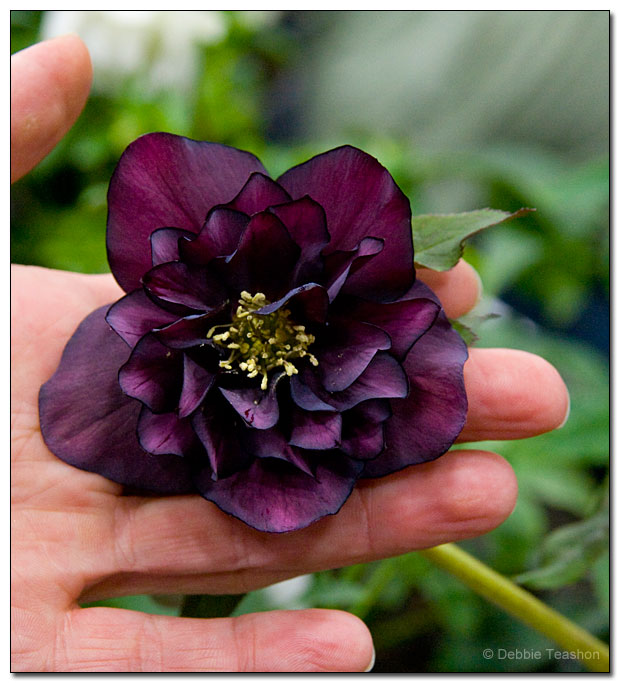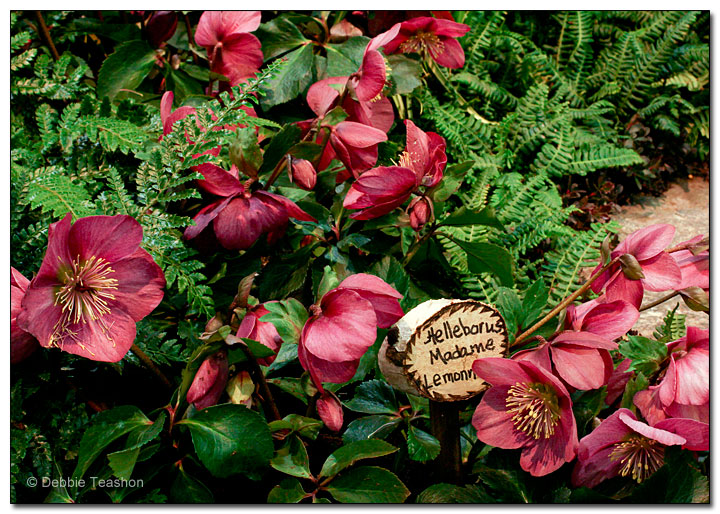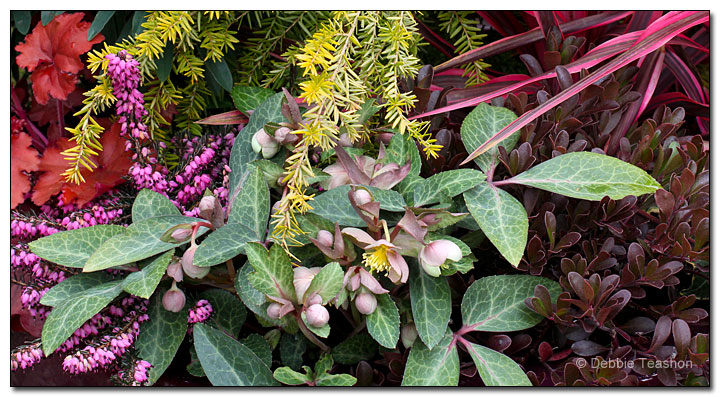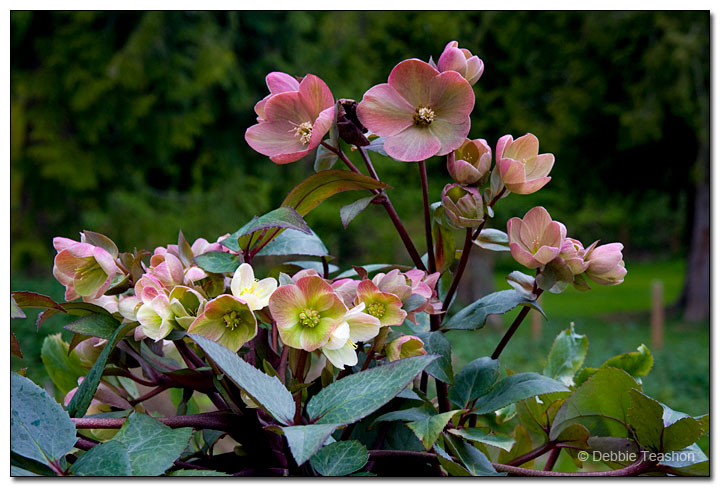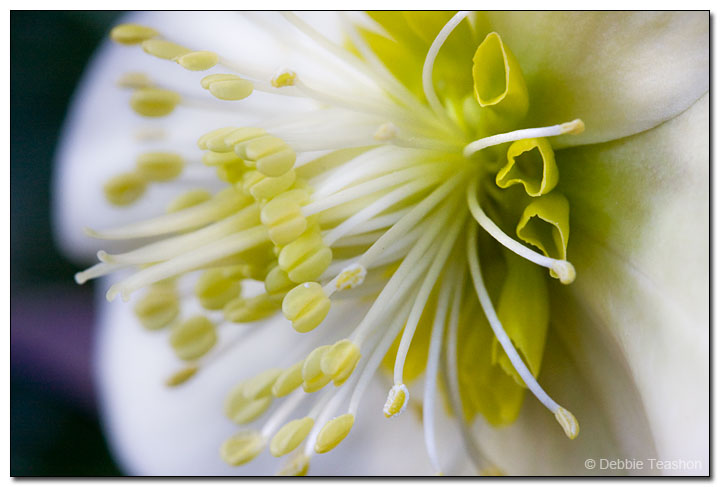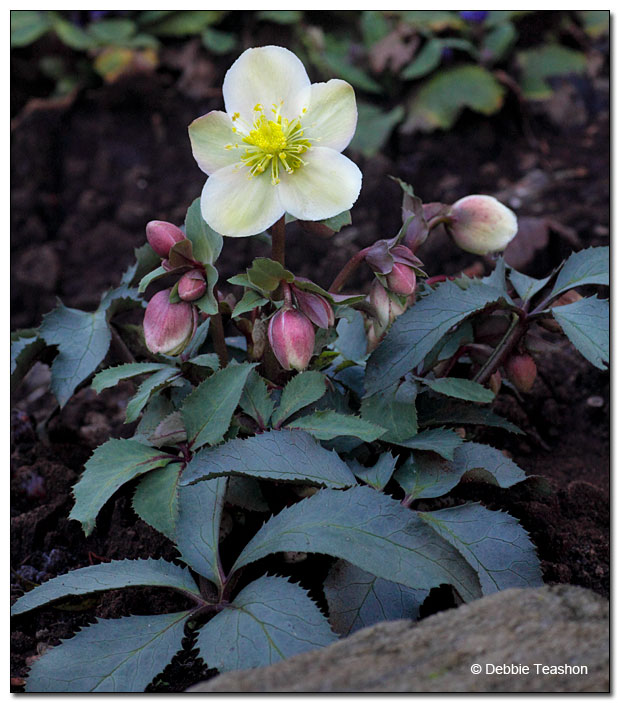Hellebores — Winter Garden Jewels

Originally written for West Sound Magazine (2023)
Brr, it’s cold outside. Take heart — the days are becoming longer, and the winter flower phenomenon is hellebore season, brought to you by the genus Helleborus.
Commonly called hellebores, Oriental hellebores, Lenten rose, or Christmas rose, whatever you call them, they put on their best finery — fancy flowers and evergreen foliage during the coldest months. Although their common name includes rose, they are not roses.
The genus belongs to the Ranunculaceae family. The family includes buttercups, a curse-worthy weed and the winter flower-power hellebores. If you don’t know a buttercup from a hellebore, read on.
Hellebores are not shy when winter sets the stage. Their sturdy, low-maintenance nature defies the cold, and they bloom in defiance. Consider them the garden’s winter-to-spring jewels; they are rare in many landscapes yet are delightful in gardens that cultivate them. The flowers aren’t a here-today-gone-tomorrow blossom; these beauties last for months.
We often hear the phrase “winter wonderland” before Christmas. Of course, that means snow, but that’s not always a yearly event in our region. For winter flower fans, a winter wonderland means a swath of the Christmas rose (Helleborus niger) bursting into full bloom.
Mature specimens from many species and their cultivars will give up to 50 flowers per plant and keep the show going for a long time. That’s part of the winter wonderland that serious plant people want.
It’s interesting to note that flower buds develop during the summer. The buds emerge from underground rhizomes in winter and bloom soon after arrival.
When the flowers open, study them. The flower petals are not petals but sepals (modified calyxes). They form a bell shape surrounding a ring of small, tubular, yellow-green nectaries. Even more interesting is that the nectaries are the petals modified to hold nectar. Inside the circle of petals are the stamens and pistils that insects land on to gather nectar and pollinate the flowers.
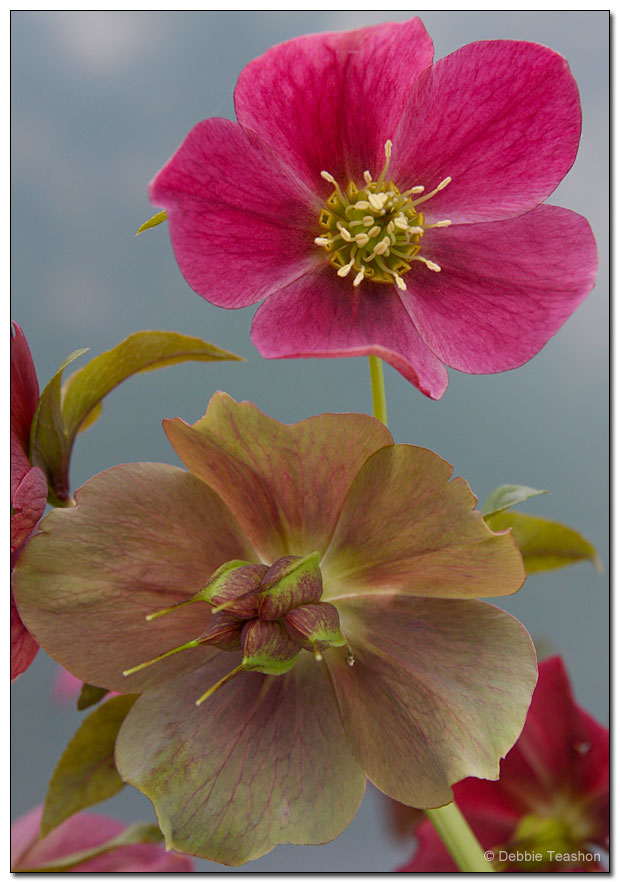
One of the reasons the flowers look great for months is the sepals stay put, looking fresh long after the petals and stamens fall off following pollination. They may change colors, though. If you continue to study the flowers, you will soon notice seed heads forming.
Long stems and long-lasting blossoms make the flowers great for the vase. Seed pods are dried and used in dry flower arrangements.
The Lenten roses we frequently refer to are hybrids (Helleborus x hybridus, pronounced hel-eh-BORE-us HI-bri-dus). Yet, the Lenten rose historically referred to the species Helleborus orientalis (pronounced or-ee-en-TAL-us).
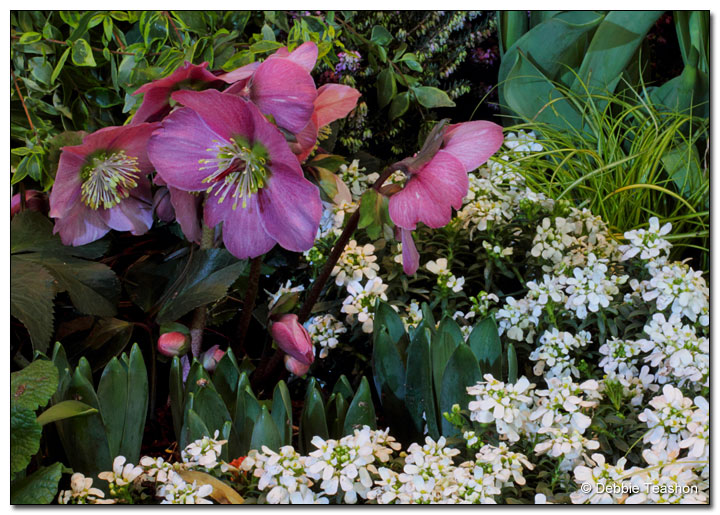
The perennials are often used in the gardens during the Northwest Flower & Garden Festival because they usually bloom naturally during the show times. Many people attribute their first introduction to hellebores to seeing them bloom at the annual garden show.
It’s never easy to choose which cultivars to plant in a garden. There are so many choices. It’s hard to find straight species to grow when hellebores hybridize freely, and plant hybridizers take advantage of this trait. They continue to bring new hybrids to the nursery trade. The best way to make choices is to visit your favorite local nursery and look them over while they bloom. Another way to find more specialty plants is to buy them from mail-order nurseries.
Helleborus is derived from the Greek word “helein,” which means injure, and “bora,” which means food. In other words, the perennial’s leaves and roots are poisonous to humans and animals.
Here are a few hellebores for the garden that put a thrill back into the winter landscape.
Helleborus ‘Onyx Odyssey’
Top hellebore hybridizer Marietta O’Byrne created this dark-as-night flower that won’t fade to green. Oregon-based wholesale nursery Terra Nova Nurseries, Inc. introduced the often described as slate, purple and black, nodding double flower as part of its Helleborus Winter Jewels strain.
Light walls or fences or light-colored foliage show off the flowers to great advantage. Dark flowers can easily be lost when surrounded by dark green or dark soil.
- Height and width: 12 by 24 inches
- Pruning: Prune stems to the ground before flower buds emerge above the crown.
Helleborus x hybridus ‘Heronswood Double Pink’
Heronswood selected these plants because of their more saturated colors in shades of light to dark pink-rose on nodding, double flowers. They consistently bloom from early December through March.
Another selected by Dan Hinkley, Helleborus x ‘Windcliff Double Pink,’ is similar and offers year-round interest in foliage or flowers.
- Height: 15 inches
- Light: Full sun, partial sun or light shade
- Pruning: Prune stems to the ground before flower buds emerge above the crown.
Helleborus x hybridus ‘Lem 100’
What do you get when you cross Helleborus niger with Helleborus x hybridus? A sterile Lenten rose hybrid named ‘Lem 100,’ commonly sold as HGC Madame Lemonnier. Martine Lemonnier from Northern France created this fantastic hellebore that is now part of the Helleborus Gold Collection.
The large, 4.5-inch-wide, outward-facing, soft pink flowers stand above the dark green, shiny foliage — the blossoms age to perfection to a reddish-pink hue.
- Height and width: 18 by 18 inches
- Light: Full sun, partial sun or light shade
- Pruning: Trim any dying or dead foliage
Helleborus lividus ‘Pink Marble’
The winter rose cultivar’s purply green stems hold both flowers and leaves. The evergreen, marbled, green-and-pink foliage with silver veins gives visual interest all year, while the charming, mauve pink and green flowers grace the plant in winter.
The species Helleborus lividus (pronounced LI-vid-us) is native to the island of Majorca in the Mediterranean and is a bit more tender than other species from the hellebore clan but hardy enough for the maritime Pacific Northwest.
- Height and width: 18 by 18 inches
- Light: Full sun, partial sun or light shade
- Pruning: Trim any dying or dead foliage
Hellebore Care
Most hellebores are easy-care perennials. Part shade is their standard preference; however, many hellebores will grow in full sun in our region. Give them well-drained, fertile and humus-rich soil for best growth. An annual mulch of compost every year keeps the hellebores happy.
Once established, the plants are drought tolerant yet grow best with supplemental watering during the drought-filled summer. They don’t grow well in soggy soil.
Plant them where they will remain, as this perennial doesn’t like to be transplanted.
Hellebores are deer-resistant plants with very few pests. Occasionally, aphids will be a problem in spring, but they are easy to rinse off the plants with water.
Some fungal problems can plague the hellebores. However, most issues don’t occur if the plant grows under the right conditions.
More Hellebores of Note

